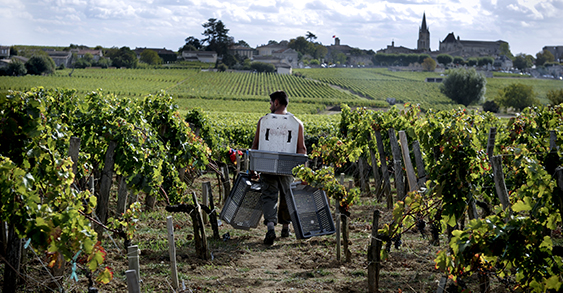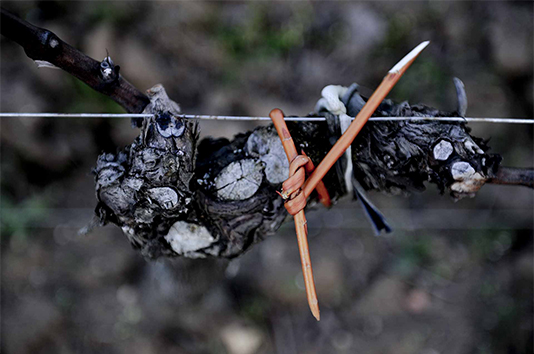Château Soutard is privileged to have 30 hectares in one piece in the heart of the limestone plateau, the sacred land of Saint-Emilion, with a soil depth of generally less than 30 centimetres. The majority of the vineyard benefits from clay-limestone outcrops. The classic formations we find are asteriated limestone, Castillon clay, calciferous molasse and recent colluvium.
This limestone dominance gives a veritable Saint-Emilion typicity in the wines: clean and precise, with great ageing potential.
The soil is worked as it was in the past, with the vines being earthed up and unearthed twice a year, essentially during the winter, as they were two centuries ago.
With the earthing up, the plough displaces the earth onto the vine stock, thus smothering the grass. Then comes the unearthing, the same operation in reverse, which allows the roots to be uncovered and the earth to be replaced in the centre of the rows.
On some plots, we can also find micro-grooves in the limestone. This distinctive feature which dates from the days of Ausone when the Romans dug trenches in the limestone so that the vine slips in and occupies a minimum amount of earth. This ancestral practice came back into favour in the 18th century.
The plantings are dominated by Merlot, (63%), with some Cabernet Franc (28%), a touch of Cabernet Sauvignon (7%), and a dalliance of 2 to 3% of Malbec.
Average planting density is 6,500 vines per hectare. Since 2008, all plantings have 8,000 vines per hectare.


« The man who talks to plants... »
Olivier Brunel, vineyard manager, nicknamed “the man who talks to plants”, is not a fan of green harvests which put additional stress on the vine and prefers to pre-empt the pruning so that green harvests are reduced to simple adjustments.
The goal of Chateau Soutard is to treat as little as possible to stay close to nature, without any fundamentalism. In this way, Château Soutard's Team works respectfully on the plateau of Saint-Émilion.
Harvests are naturally done by hand, carried out by a loyal harvesting team. The 10 kilo crates are kept in a cold room overnight before being taken to a vibrating sorting table; the grapes are then sorted and de-stemmed.